Worse than a crime. Construction of the corvettes project 20386 - error
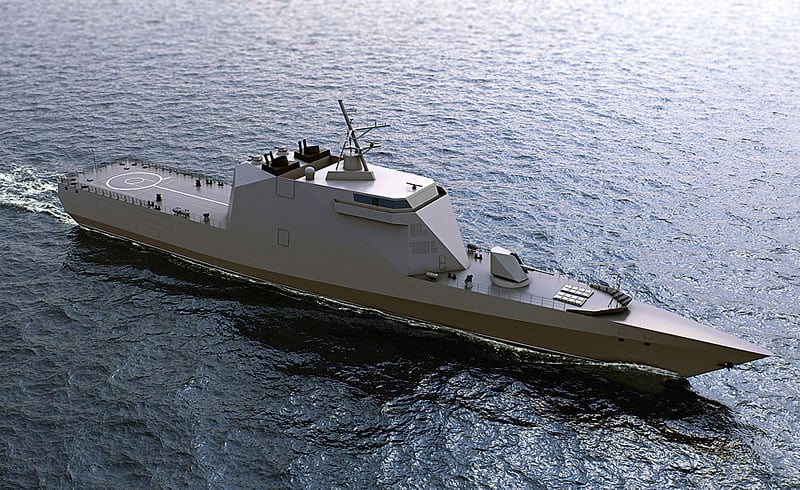
28 October 2016 of the year on the stocks of PJSC "Severnaya Verf" was laid the ship of the project 20386 with the name "Daring". Representatives of the shipbuilding industry paint this ship as incredibly innovative, unobtrusive and under construction using the latest technologies. Representatives of the Navy echo them and argue that the fleet will order ten such ships. Production of the corvettes of the 20380 and 20385 projects will be discontinued after the completion of the ships already laid.
This decision reveals a catastrophic problem that threatens to significantly undermine the combat capability of the Navy and, as a result, the defense capability of the country as a whole. At the moment, in the Russian Navy there is a huge variety of types of ships, with minimal unification between them. For example, among small missile ships there are ships of project 1234.1, which are replaced by two types of ships - 21631 and 22800. And there are anti-submarine ships of project 1124, corvettes of project 20380 both in order and in construction, corvettes of project 20385 and now here are 20386. The last representative of the "mosquito fleet"The Russian Federation are the project 22160 patrol ships under construction.
There is no reason to talk about disagreement among large-class ships, among them there is a real “zoo”, ranging from TFR “Sharp”, launched in 1967, to various frigates of the 11356 and 22350 projects being built at the same time. In this case, the latter, apparently, will again be built in a small series, becoming the basis for some new project, now known as 22350M. Similarly, ocean ships of the 1 rank are still Soviet-built or bookmarks are also not happy with the unification.
All this creates a lot of difficulties in supplying the ships with spare parts, in repairs, in the training of officers and midshipmen. It is not hard to guess that, from a financial point of view, it is more profitable to have a spare part of one type in stock rather than ten non-interchangeable analogues. For comparison, the US Navy has one type of destroyer (class "Arleigh Burke"), one type of cruiser (class "Ticonderoga"). Aircraft carriers are mainly of the Nimitz class, which are replaced by the Ford class, universal landing craft of the Wasp class, which are replaced by the America class, etc. Moreover, these ships are very much unified with each other.
For example, on all heavy ships with a gas-turbine power plant, the same type of turbine is used - General Electric LM2500 in different versions. On helicopters and in ship torpedo tubes the same torpedo is used, etc.
The class of LCS ships is a little out of line, but this stillborn project is unlikely to be developed, as well as an experiment with destroyers of the Zumwalt type. Such unification leads to lower costs for the operation of ships, and for their repair, and for conducting combat operations and exercises, and, of course, for the training of personnel and its interchangeability - a torpedo from one destroyer without problems will serve on the other exactly the same whereas the officer who transferred from the TFR of the 1135 project to the frigate of the 11356 project must be retrained. At the very least, its retraining will mean a temporary decrease in the ship’s combat capability and often additional costs.
Started in the middle of the 2000-s, the naval renewal program could very well lead the seafarers to uniformity. Instead, the fleet began to be saturated with ships of various classes that were not unified with each other. And it is believed that this is not just.
Any design bureau, including shipbuilding, is interested in constant loading of project activities paid from the state budget. If the Navy receives one or two types of surface ships, once having paid the cost of R & D, included in the price of the first series under construction, the Navy will only pay for upgrades and technical support, if they are needed. As a result, having created, for example, a corvette, the KB in the future, it only accompanies and modernizes this project, which is incomparably financially beneficial to the cost of developing a new ship. But if we succeeded in lobbying for the quick replacement of a new class of ships with some more new ones, then the financial receipts and incomes of the design bureaus turn out to be much larger than with some modernization work.
Thus, if it is right and beneficial for the Navy to have standardized ships, then for design organizations it is advantageous to design and build many different classes of ships to perform the same tasks, ideally - one by one. It is also profitable for the industry, because it allows to give work to literally everyone - ships are different and the systems should be different on them, which means that Kolomna and Rybinsk will work on engines, for example. And with other systems, everything will be the same.
The termination of the further construction of ships of the 20380 / 20385 project and the start of the construction of ships of the 20386 project looks exactly like the implementation of such a scheme.
This has a dramatic negative effect on the combat effectiveness of the Navy, because simultaneously with the start of construction of the 20386 project ships, the construction of the 20380 corvettes of the 20385 project and the XNUMX corvettes that are partly unified with them, for which the Navy has a lot of tasks, stops. As a result, the previous ships were built in insufficient quantities, but a new class of more expensive ships is being built, for which, as will be shown below, there are no tasks.
It is quite possible that the decision to launch this project was made not at all for the sake of strengthening the Navy. It is necessary to understand what reasons contributed to the fact that the 20386 project received such a development - it is quite possible that we are talking about the banal “pumping” of design organizations and industrial enterprises with new orders that the Navy itself is not so necessary. In order to be convinced of this, it is necessary to turn to a comparison of this ship with its predecessors still under construction, the development of which was brought about by its appearance.
First, the key feature of the 20386 project ship is its huge price. Currently, the figure in 30 billion rubles is known. And meanwhile, the shipbuilding industry has never met the agreed price of the contract, which means that even without other conditions this price is likely to increase. Thus, the ship is equipped with modular weapons, which will also cost money, and will require special storage conditions on shore, separate personnel for each module, which, if not used, will simply live on naval bases, receiving food and allowance. Unfortunately, no one considers this money, and the sum for the entire service life of the ship will be considerable. It is not difficult to guess that in the end, with the expansion of coastal infrastructure, the price of the ship can reach 35 billions. Is it a lot or a little?
This is the price of two corvettes project 20380. Thus, with the money that the fleet wants to spend on ten ships of the 20386 project, it is possible to build twenty ships of the 20380 project. And this will allow to replace all the rapidly aging obsolete small anti-submarine ships of the 1124 project, of which there are even more 20 units in the ranks of the Navy. Today, these ships are vital to cover the combat duty areas of ballistic-missile submarines (SSBNs), which are a critical component of the Nuclear Determination Force (SNF), and in the case of a “missed” nuclear strike from the US (which cannot be ruled out) These submarines will be the only means of retaliation against the United States, since the other components of the SNF will not survive the massive missile attack. However, instead of the second series of twenty ships of the 20380 or 20385 project, the Navy wants to build ten ships of the 20386 project, which, of course, will not be able to perform those tasks that can be performed by twenty ships with similar capabilities.
The second drawback of the 20386 project is its weaponry. Less modules with removable weaponsThe 20386 project ship is armed almost as much as the twice as cheap 20380 Corvette. The differences are as follows: he has more anti-aircraft missile launchers on the 4 and at the same time there is no towed sonar station available on 20380 and 20385 projects, which can be installed as a removable module. Is it worth doing for this new ship? Of course, it is possible to install on this ship a module with cruise missiles "Caliber", but when it is installed, the possibility of basing a helicopter on the ship disappears!
But it is anti-submarine aviation, including helicopters, is the most dangerous enemy for submarines. It turns out that the fleet command, where the ships of the project 20386 will be based, will be forced to choose between offensive missile and anti-submarine weapons. With a helicopter on board, the Project 20386 ship is almost identical in design to the Project 20380 Corvette at twice the price. In the variant with the modular launcher of the Kyrgyz Republic "Caliber", this ship receives offensive capabilities that the project 20380 corvette does not have, but at the cost of losing the ability to effectively fight submarines.
Even worse, the armament of the new ship looks like in comparison with the 20385 corvettes. This ship has identical to the 20386 project anti-aircraft armament, high-tech integrated mast with radar, universal ship-shooting complex 3С14 for eight Caliber and Onyx cruise missiles, or anti-submarine missile torpedoes. With all this heavy weapons, the ship carries a helicopter. And the commander of the formation, or the commander of the organization to which the ship is subordinate, does not have to choose between its anti-submarine and strike capabilities. At the same time, the 20385 corvette is also cheaper than the 20386 project by at least a third. The situation with the 20386 project looks even more absurd due to the fact that earlier, in the 2013 year, the Navy abandoned the 20385 project corvettes because of their high prices.
It turns out that at least a third more expensive ship with the weakest weaponry is suitable for the fleet, but a cheaper and well-armed one is not suitable? But this is absurd. If it is so critical for the Navy to have the ability to replace the helicopter with a container PU of the Kyrgyz Republic, then you can also put it on the deck of the 20380 corvette by placing control equipment in the helicopter hangar. The same, but twice cheaper.
The third minus of the new ship is the fact that it is of a new type and its unification with other ships of the 2 rank. Instead of diesel engines of the Kolomna Plant, this ship has a gas-turbine power plant with electric propulsion. This is an innovative system, and its maintenance and repair will require retraining of personnel, the formation of stocks of spare parts and accessories, as well as at first will lead to unnecessarily long repairs and maintenance errors. The ship is equipped with a new architecture for the Russian Navy radar, and this will entail problems similar to those with the new GEM. Why is all this necessary?
The fourth problem that the construction of a new ship entails is that it is being built in a single copy, others have not yet been laid down and the contracts for them have not been signed. The seriality of ships is a necessary condition in order to reduce the cost of their production and eliminate the "childhood diseases" that are inevitable for each new technically complex product.
Now the construction program for corvettes of 20380 / 20385 projects has been stopped. Those ships of projects 20380 and 20385, which have already been laid, will be completed, but new ones will not be laid. Instead of them, a single “Daring” is being built, and yet this is the loss of a priceless irreplaceable resource - time. The only resource that will never be returned or replenished. In addition, if the construction of similar-type corvettes of the 20380 and 20385 projects would continue, then it would be possible to use her example to improve the organization of the production process at the shipyards in order to finally start building ships in a reasonable time. For example, the heavy aircraft-carrying cruiser Kiev was built in five and a half years — faster than Russia is building small corvettes now. But it was the first Soviet aircraft carrier and one of the most high-tech and sophisticated ships in the world at that time. Regular launches of new projects make it difficult to debug production management at shipyards, and the start of work on the 20386 project also does not contribute to this debugging. Similarly, the termination of orders for ship diesel engines at the Kolomna Plant does not allow the plant to bring these engines to the required level of reliability.
The fifth drawback, and it is very significant, is the very concept of modularity. It is worth recalling that the US Navy, who originally planned to get modular weapons on LCS class ships, failed the idea with the modules. But their experience in naval construction is truly immense. The module has to be stored in special conditions, it is necessary to keep personnel under each module, and, of course, going out to sea with the module, the ship loses its versatility until the next module replacement. All this led the Americans to the idea of the inferiority of modular ships. Is there any reason to believe that we will succeed otherwise? Not. And a comparison of the combat capabilities of the 20385 Corvette and the 20386 project ship already now shows this perfectly.
Are there any advantages in abandoning the already proven and familiar corvettes of the 20380 project (and improved 20385) in favor of the new ship? At first glance, the ship project 20386 has a lot of advantages. It is more seaworthy thanks to more perfect hull lines. He has a greater range. He has a more advanced radar, a fundamentally new type for Russia. It has a significantly reduced ESR. It can operate in the far sea zone according to the conditions of habitability, seaworthiness and range. But why all this?
For the far sea zone in Russia, the 22350 frigates are being built, the most powerful ships of this class in the world, which have absolutely incomparable capabilities with the 20386 project. For the ocean zone need even larger ships with even more powerful weapons.
For the near sea zone, as a replacement for the 1124 IPC project, the 20386 project ships are completely redundant - to perform combat missions in this zone do not need such a range as theirs, you do not need to have modularity, but you need to have a lower price, and the maximum possible anti-submarine capabilities for this price.
In fact, the ship of the project 20386, although it is called the word "corvette", but in terms of its displacement, seaworthiness and range, this is a frigate. And most importantly - it is a frigate and at a price too, and at the same time it is armed at the level of a corvette! Calling this ship a corvette, as the developers and the Navy do, is wrong; it is not. It is simply a complex, high-tech, expensive and weakly armed frigate. If a group of two frigates of the 22350 project theoretically has a chance to fight off a squadron raid (14-16 vehicles) of deck F / A-18 fighter planes armed with a pair of anti-ship or anti-radar missiles each, then a pair of 20386 project ships have no such possibility even in theory. So what tasks will this ship perform in the far sea zone? Why does he need a long range? Maybe it would be worthwhile to build such ships (or at least one such ship) in order to test the concept of modularity in practice? But even if we discard all the facts that speak about the inferiority of modularity in relation to a large ship, now a whole series of patrol ships of the 22160 project are being built. All the pros and cons of modular weapons can be checked on them. On these ships, at least, replaceable modules with weapons do not interfere with the use of a helicopter, and for the ships themselves there is a real task in the fight against piracy. At the same time, they are much cheaper than any corvette or underfrigate.
Ultimately, for this very expensive (for its combat capabilities) and complex ship, in a war with a strong adversary, there will simply be no tasks that would justify its price and complexity, but the construction program of such ships disrupts the construction of simpler, cheaper and more needed corvettes. Which, in the case of the project 20385, also have more powerful weapons.
In order to assess the damage that the project 20386 does to the state, one must also take into account the factor of military exports. The corvette of project 20380 is not ideal, of course, but it has every chance of becoming a de facto standard in the global shipbuilding industry, as before it became the de facto standards in small arms cartridge 7,62x39 and Kalashnikov assault rifle, among tanks T-55 tank, among the heavy infantry weapons anti-aircraft gun ZU-23, etc.
The ship can be equipped with foreign weapons, including rocket, and can also carry a foreign helicopter on board. Structurally, it is possible to install foreign diesel engines on the ship. Moreover, even now it is quite competitive in price in comparison with the corvettes produced in Western countries, and surpasses them in armament. Moreover, for part of the poor, but ambitious states, this ship could become an ersatz frigate performing combat missions in the fight against enemy surface ships, submarines and aircraft. Russia could sell licenses for the production of various versions of this ship, one country for Exoset missiles, another for Chinese missiles, possibly under the arms of the NATO standard, with different artillery systems, radar stations, etc. This would make the corvette as widespread in the world as the aforementioned weapons systems manufactured in the USSR turned out to be.
Such a ship could well be interested in at least Iran, Algeria and Brazil have already shown interest in it. But now this ship has a reputation for a project that its creators themselves refused. Continuation of the serial production of 20380 and 20385 corvettes would improve their export prospects, and very seriously. At the same time, the export prospects of the 20386 ship are very vague - it is unlikely that fleets counting every cent will be ordered by an expensive frigate armed as a corvette, and which cannot use modular weapons and a helicopter at the same time and, moreover, there is no possibility of adaptation. under the desired engine model and familiar weapons.
The final argument against building ships of the 20386 project is technical risk. It is not so easy to create a weapon system from components that have never been built or used before (radar, electric propulsion), while ensuring its reliability and reliability. Most likely, commissioning the 20386 project ship will take more than one year.
So what's the point in building such a ship? Why is it needed?
From the beginning of this project, only Almaz Central Metallurgical Bureau and shipbuilding systems manufacturers win, the Navy loses, and with it the whole country!
Unfortunately, the command of the Navy, apparently, is in the wake of the industry, which means that the Supreme Commander should intervene in the situation. It is necessary to immediately resume production of the corvettes of the project 20380 or 20385. Ideally, 20385, since the fleet is ready to give a lot of money for the 2 rank ship. It is necessary to build 20 of such ships and replace with them the rapidly becoming obsolete small anti-submarine ships of the 1124 project, bringing the latter into reserve (those that still have a resource). The number of built corvettes should ensure full protection of combat patrol areas (together with basic anti-submarine aircraft and fighter aircraft) SSBNs without engaging ships of other classes in the task of protecting the water area. On this large series of ships, it is necessary to finally work out the issues of production planning in the shipbuilding area and related companies, and finally learn how to build ships in a reasonable time. The repeatability of the processes during the construction of a series of unified corvettes will make it possible to perform several attempts at debugging each stage of construction.
Of course, the corvette of the 20380 project is not perfect, however, it is already being upgraded. The ships received the "Redoubt" air defense system, the ships "Retivy" and "Strict", judging by the images on the mortgage boards, will receive an integrated mast, similar to that installed on the 20385 project. Of course, they need to be improved further - to increase the reliability of the engines, increase the torpedo armament ammunition, change the anti-aircraft AK-630M anti-aircraft installation that is inadequate to existing threats for something more effective, start using 100-mm artillery ammunition capable of fighting air targets. But such a modernization is a normal and correct path for the development of a family of warships, significantly more correct than dubious and expensive experiments.
In the end, later, on the next generations of these corvettes, you can try out electric propulsion, and on future frigates and destroyers to use the technological groundwork obtained during the design of the 20386 project ship.
Production of the 20386 project ships must be stopped and henceforth will not be considered for its resumption. As was shown above, the technical innovations used in this ship do not justify themselves for the tasks that the Corvette class ship must perform.
What to do with the already partially built hull? The ideal option, and he is the most "budget" - cut it into metal. Sadly, sometimes such decisions have to be made. AT stories The Navy has a similar negative experience - the construction of the 1123.3 project's anti-submarine cruiser of the 1143 project was stopped, it was dismantled on the stocks, and the Kiev of the XNUMX project was laid in its place. Time has shown the absolute correctness of this tough decision.
As an option, this ship can be completed as an experimental and educational at the same time, for testing electronic equipment, a fundamentally new main power plant, for testing innovative hull lines and evaluating the real value of low-visibility in the radar wavelength range. In addition to the above tasks, it can be used as a training (internal volumes allow you to place a large number of students), and for training helicopter pilots to search for a ship at sea, boarding a ship and flying from it. It may be worth doing with a simplified and abbreviated set of weapons on this ship, since it will not be combat.
The third option, the worst of the permissible, is to build a full-fledged warship in accordance with the project, but in a single copy and simultaneously restarting the construction program (and, preferably, further modernization) of 20380 and / or 20385 corvettes.
The refusal to build tested and studied corvettes of 20380 / 20385 projects in favor of building only ten underfrigates of the 20386 project is completely unacceptable and should be revised.
Best the enemy of the good. Even if we discard the shortcomings of the 20386 project, then its price and technical complexity in comparison with the ships of the 20380 and 20385 projects fully correspond to the above statement. The decision to abandon the corvettes of the 20380 and 20385 projects in favor of the 20386 project was such an error that is worse than a crime. This error needs to be fixed.
It is necessary to cancel the construction program of ten ships of the 20386 project, cancel the decision to stop the production of 20380 and 20385 corvettes and resume their production in at least 20-25 units in addition to the ships already planted, and replace them with 1124 anti-submarine ships.
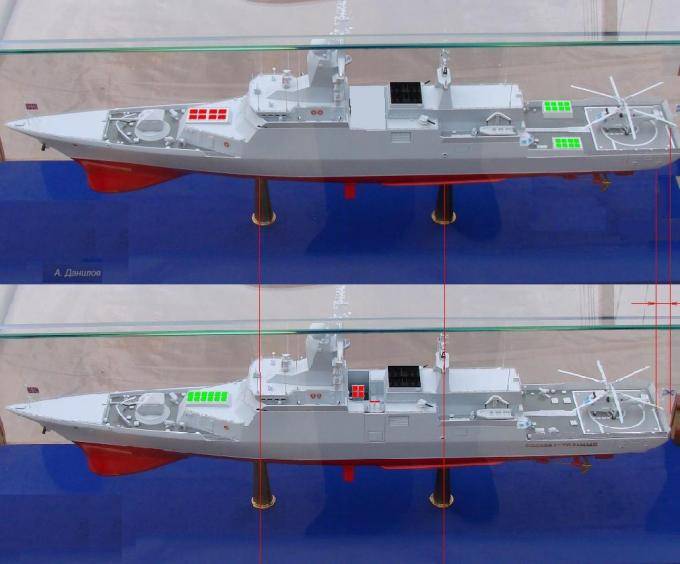
In modern foreign policy conditions, neither doubtful experiments with combat capability nor delay are acceptable. Unfortunately, the 20386 project combines both, and should be canceled.
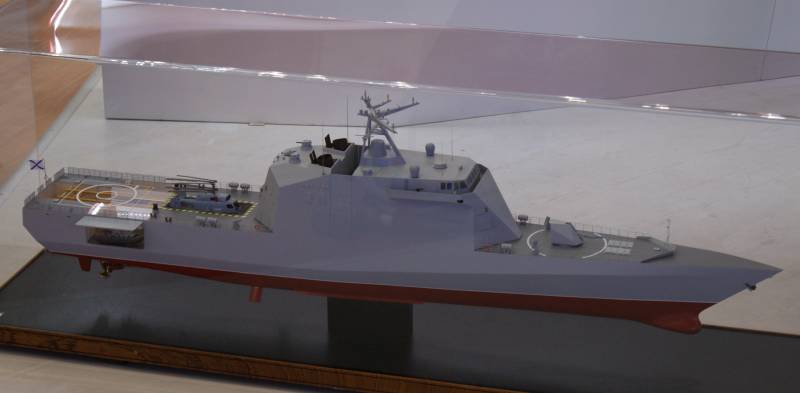
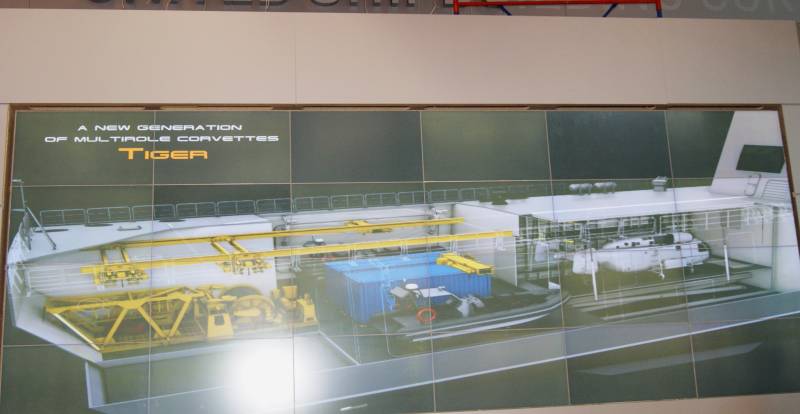
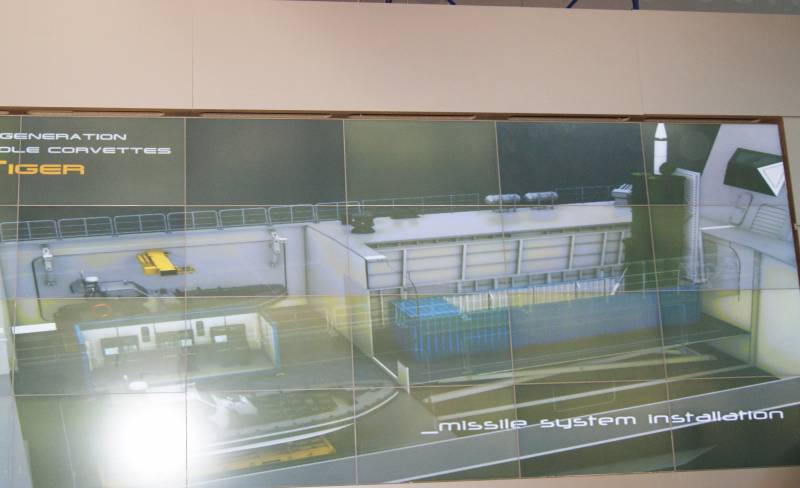
Information